If you’re interested in earning a high income stream from your investments, you should know (if you already don’t) that you can’t get something for nothing. Often, the more dividend yield you crave, the more risk you’re forced to take on.
But high-dividend ETFs can often help you tamp down that risk a little.
High-yield dividend ETFs, as the name implies, are funds that predominantly invest in assets that produce much more income than your average ETF. They do so by investing in specific corners of the market, exposing you to different areas of the world, or even using a few special market mechanics to make the cash-rich metaphorical sausage. And importantly, by spreading their assets out across dozens, hundreds, or even thousands of investments, they help reduce the risk to your portfolio of any single security suddenly imploding.
Want to learn more? Well, read on as I introduce you to a group of high-dividend ETFs that pay between 3.9% and 10.2% annually—or, put differently, anywhere between three to seven times the broader market.
Disclaimer: This article does not constitute individualized investment advice. These securities appear for your consideration and not as personalized investment recommendations. Act at your own discretion.
Editor’s Note: This article’s tabular data is up-to-date as of Jan. 28, 2025.
Featured Financial Products
Table of Contents
Why Invest in Dividend Stocks via ETFs?

The top dividend-focused exchange-traded funds offer you a way to invest in many of these presumably high-quality stocks with just one purchase.
As a group, dividend stocks are pretty common, but they’re not created equally. Some companies only pay nominal dividends that are just a penny or two per share, with no prospect for dividend growth anytime soon. Others may offer generous but unsustainable dividend payouts that might be eliminated altogether in the future.
That’s why exchange-traded funds are a good alternative to individual dividend stocks. ETFs spread your money around, rather than force you to rely on one company’s specific strengths and weaknesses. And finding the best stocks capable of consistently paying dividends and enjoying significant future dividend growth can be a daunting task, even for seasoned investors. So instead, why not try to gain exposure to dividend-paying stocks via a single, diversified holding that’s tasked with finding great companies for you?
That’s what you’ll get in a dividend ETF.
Do you want to get serious about saving and planning for retirement? Sign up for Retire With Riley, Young and the Invested’s free retirement planning newsletter.
How Were These High-Yield Dividend ETFs Selected?

Given that these are dividend ETFs, this list of funds is limited to those dealing with stocks—bond funds don’t apply.
There’s no universal definition of “high yield.” Much like beauty, a high dividend is in the eye of the beholder. But given that it’s a list of high-dividend ETFs, I have to set the floor somewhere, and that somewhere is 3.5%. That ensures you’ll earn well more than triple (and in most cases, many times more) what you’d collect by investing in an S&P 500 index fund.
And as a quality check, I’ve only included dividend ETFs that have earned a Morningstar Medalist rating—Morningstar’s forward-looking analytical view of the fund—of at least Bronze. A quick explanation of why that matters, per Morningstar:
“For actively managed funds, the top three ratings of Gold, Silver, and Bronze all indicate that our analysts expect the rated investment vehicle to produce positive alpha relative to its Morningstar Category index over the long term, meaning a period of at least five years. For passive strategies, the same ratings indicate that we expect the fund to deliver alpha relative to its Morningstar Category index that is above the lesser of the category median or zero over the long term.”
Importantly, a Medalist rating doesn’t mean Morningstar is necessarily bullish on the underlying asset class or categorization. It’s merely an expression of confidence in the fund compared to its peers.
From the remaining universe of ETFs to choose from, I picked ETFs from a variety of sectors, geographies, and strategies. I also selected funds that have reasonable expense ratios—given their specialties, many of these cost more than a bland broad-market ETF, but they’re fair or low for their category.
An Important Note About Dividend ETFs
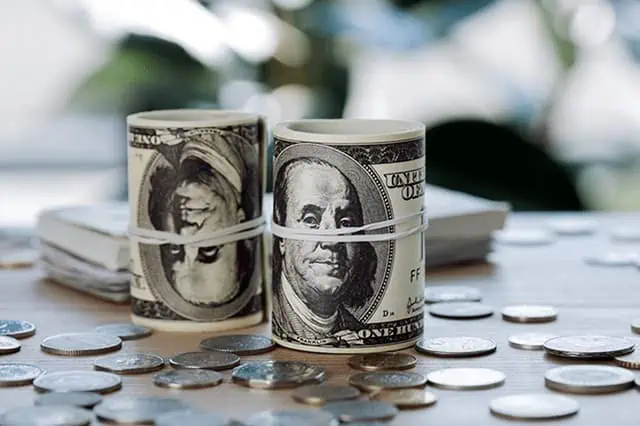
One last thing to know before diving into any dividend ETF: Their distributions tend to reflect the cash dividend payments of their underlying holdings. In other words, what you’re getting from an ETF in a quarter is more or less your share of all the dividends that all of the holdings made within that quarter.
But sometimes, individual components don’t always pay within each given quarter (even if they pay quarterly). Also, they occasionally increase regular dividends, make special payouts, or cut or even suspend regular dividends. As a result, ETFs can have “lumpy” distributions that change from one quarter to the next.
Here’s an example: In a 12-month period, the SPDR S&P 500 ETF Trust (SPY)—the largest ETF by assets on the planet, and thus one of the most commonly owned—paid out quarterly dividends of $1.75, $1.76, $1.59, and $1.91 per share. That’s a roughly 20% difference between the smallest and largest payouts.
If you’ve not yet reached retirement, this inconsistency probably won’t matter to you at all. But it could be problematic—or at the least, worth planning around—if you are in retirement and heavily depend on dividend income to pay your regular bills. So especially if you’re in the latter boat, when you research dividend funds, I highly suggest not just looking at yield, but at distribution history, too.
Best High-Dividend ETF #1: SPDR Portfolio S&P 500 High Dividend ETF
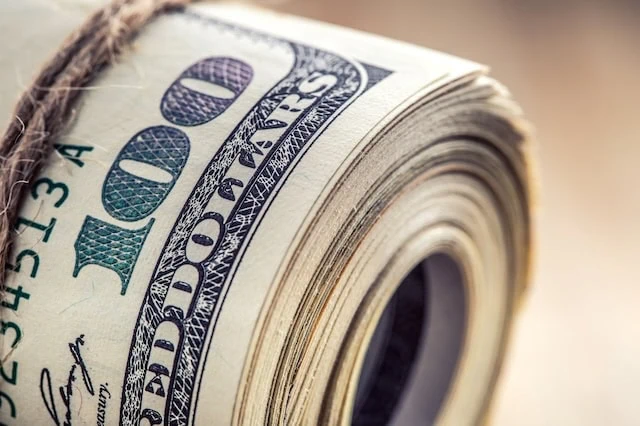
— Assets under management: $6.9 billion
— Expense ratio: 0.07%, or 70¢ per year on every $1,000 invested
— Dividend yield: 4.3%
— Morningstar Medalist rating: Bronze
I’ll start with a high-yield ETF that’s pretty straightforward, and that will feel comfortable to many investors given what it invests in.
The SPDR Portfolio S&P 500 High Dividend ETF (SPYD) is very much what you might guess it is. This index fund tracks the S&P 500 High Dividend Index, which itself is made up of the highest-yielding companies within the S&P 500.
To determine which stocks are included, the index simply looks at the annualized yield of every component’s most recent dividend payment. While the fund currently holds 80 stocks, that number can change a bit—in summer 2024, for instance, SPYD had 75 components. This ETF tends to gravitate toward higher-yielding sectors, which right now means its heaviest allocations are to real estate investment trusts (REITs), financials, utility stocks, and consumer staples.
One especially noteworthy difference from the S&P 500 is how SPYD weights its stocks. The S&P 500 is weighted by market capitalization, which means the larger the stock, the more representation it has within the index. Consider this: $3 trillion-plus Apple (AAPL) makes up more than 7% of the S&P 500, $300 billion Big Pharma name AbbVie (ABBV) accounts for 0.3%, and $28 billion Kellenova (K), the cereal giant formerly known as Kellogg, is weighted at a mere 0.04%.
However, SPYD equally weights each stock, so each stock has an equal impact on the portfolio. Stocks’ weights will change as they rise or fall in value—right now, Kellenova makes up 1.6% of SPYD’s portfolio, AbbVie is 1.1%, and Apple … well, Apple didn’t yield enough to get in!—but they’ll be equally weighted again each time the fund rebalances, which is semiannually.
I bring up SPYD’s equal weighting because it plays a vital safety role. Market cap-weighted funds can allow some components to have an outsized impact on the fund’s performance. No joke: Some ETFs allocate as much as 20% to a single stock, which means that stock can make or break that fund’s year. Equal weighting reduces the chance that any one stock can derail the ETF’s performance.
Why does that matter in a fund filled with supposedly blue-chip firms? In some cases, high yields can be a sign of a troubled stock. (Remember: Dividend yield is the stock’s dividend divided by the stock’s price. A higher dividend can make that yield go up, but so can a lower stock price.) And even large-cap S&P 500 companies can hit turbulence. Spreading your risk across 75 to 80 stocks—then ensuring that risk is evenly distributed across the lot of them—helps insulate you from single-company shocks.
Related: The Best ETFs to Buy Now
Featured Financial Products
Best High-Dividend ETF #2: Vanguard Real Estate ETF

— Assets under management: $35.5 billion
— Expense ratio: 0.13%, or $1.30 per year on every $1,000 invested
— Dividend yield: 3.9%
— Morningstar Medalist rating: Gold
Real estate makes up roughly a quarter of the aforementioned SPYD, and no wonder—ever since equity REITs became their own sector in 2016, they’ve typically been among the highest-yielding S&P 500 sectors.
Unlike most companies that more or less choose to pay out dividends, REITs are compelled to—by law. REITs were created by Congress in 1960 to spur real estate investing. They’re given favorable tax treatment … but in exchange, they’re required to pay out at least 90% of their taxable income to shareholders, in the form of dividends.
So, if you’d prefer to just go straight to the source, you can do so through a number of REIT ETFs, though none bigger (and arguably none better) than the Vanguard Real Estate ETF (VNQ).
This market cap-weighted index ETF tracks a broad list of REITs covering a variety of industries: office buildings, apartments, data centers, warehouses, senior living facilities, even driving ranges. At the moment, top REIT holdings include data center REIT Prologis (PLD), telecommunications infrastructure firm American Tower (AMT), and health care real estate company Welltower (WELL).
The portfolio is plenty wide at nearly 160 holdings, though you’re definitely exposed more to some industries than others. Right now, health care REITs top the group at 12%, followed by roughly 10% allocations to industrial REITs and data center REITs.
Related: 10 Best Vanguard Funds to Buy for the Everyday Investor
Do you want to get serious about saving and planning for retirement? Sign up for Retire With Riley, Young and the Invested’s free retirement planning newsletter.
Best High-Dividend ETF #3: Hoya Capital High Dividend Yield ETF

— Assets under management: $73.0 million
— Expense ratio: 0.50%, or $5.00 per year on every $1,000 invested
— Dividend yield: 10.2%
— Morningstar Medalist rating: Silver
Vanguard’s VNQ is generally considered the gold standard of the REIT ETF space. But for income hunters looking for truly lofty yield, you can find a bigger paycheck.
The Hoya Capital High Dividend Yield ETF (RIET), for instance, invests in 100 high-yielding real estate securities—mostly the common stock of REITs, but also preferred shares (which I’ll discuss in more detail when I discuss the next fund). The fund divides its assets across five categories:
1. 10 “Dividend Champions” (15% weight): REITs of any market capitalization that have the highest yield in their property sector
2. 10 large-cap REITs (15% weight)
3. 25 mid-cap REITs (30% weight)
4. 25 small-cap REITs (30% weight)
5. 30 preferreds (10% weight)
RIET also differs from VNQ in that it equally weights its holdings within each of those categories, then rebalances twice a year. Right now, top holdings include office REIT Kilroy Realty (KRC), real estate and alternative investment manager Rithm Capital (RITM), and mortgage REIT Starwood Property Trust (STWD). For the uninitiated: Mortgage REITs, or mREITs, don’t invest in physical real estate—instead they tend to own bundles of mortgage-backed securities (MBSes) and other “paper” real estate.
It’s a young fund—inception was in September 2021, so it only has a little more than three years of track record to study. And even with dividends included, its performance has come up a little short compared to more traditional REIT ETFs. Still, Morningstar has awarded it with a Silver Medalist rating based on its relatively low fees and laudable investment process.
Also worth noting? RIET is a rarity in that it’s a monthly dividend payer (most equity dividend ETFs pay quarterly). The monthly dividend has remained consistent since inception, with the exception of a 2%-plus hike in 2023. It’s a blessing and a curse. Yes, it means investors know what they’re getting every month. However, each monthly distribution is made up of varying levels of actual dividend income and “return of capital,” which is treated differently from a tax perspective. So again, check the distribution history and tax documents, and understand the consequences, before you invest.
Related: The 7 Best Vanguard ETFs to Buy for Low Costs
Best High-Dividend ETF #4: Franklin International Low Volatility High Dividend ETF

— Assets under management: $1.6 billion
— Expense ratio: 0.40%, or $4.00 per year on every $1,000 invested
— Dividend yield: 4.9%
— Morningstar Medalist rating: Silver
Any group of favorably rated high-yield dividend ETFs is bound to include at least a couple international stock funds. Large, established dividend payers abroad—especially in developed countries—have for years tended to pay more than their U.S. counterparts, in part because the long-term outperformance of U.S. stocks has depressed yields.
And given what Franklin International Low Volatility High Dividend ETF (LVHI) is trying to do, its portfolio is necessarily stuffed with large, established dividend payers.
LVHI is an index fund designed to provide a portfolio of high-yielding dividend stocks with low price and profit volatility. Its screening process involves identifying dividend-paying companies that can pay “relatively high sustainable dividend yields,” then grading yields based on price and earnings volatility. LVHI also puts various limits on the portfolio to eliminate overconcentration risk—for instance, no stock can make up more than 2.5% of the index at quarterly rebalancing, and no country can make up more than 15%.
Related: 13 Best Mutual Funds to Buy
And to further tamp down on volatility, LVHI hedges against currency fluctuations.
The result is a roughly 135-stock portfolio thick in large-cap stocks (~90%) from about 20 developed nations, including Japan (16%), the U.K. (13%), Canada (12%), Switzerland (10%), and Italy (10%). Top holdings include the likes of Canadian financial Bank of Nova Scotia (BNS), Japan’s Nippon Telegraph & Telephone, and British-Australian multinational miner Rio Tinto (RIO).
The result of holding all of these large international names is not only a 4%-plus yield, but much higher returns (and much lower risk) compared to LVHI’s category average.
One last thing: The “lumpy” dividends I mentioned earlier? These are really exacerbated in international dividend funds, as foreign companies often pay just semiannually or even annually. For instance: LVHI’s four most recent quarterly dividend payments ranged from 3.7¢ to 91.6¢!
Related: The 7 Best T. Rowe Price Funds to Buy and Hold
Best High-Dividend ETF #5: WisdomTree Emerging Markets High Dividend Fund

— Assets under management: $2.8 billion
— Expense ratio: 0.63%, or $6.30 per year on every $1,000 invested
— Dividend yield: 5.2%
— Morningstar Medalist rating: Gold
The WisdomTree Emerging Markets High Dividend Fund (DEM) drills for dividends in a less likely basin: emerging markets (EMs).
Related: The 10 Best Vanguard Index Funds You Can Buy
Whereas developed markets tend to be defined by low growth but relative economic and political stability, emerging markets go the other way—these countries are often developing rapidly, offering the potential for high growth, but they might also have higher-risk aspects such as unstable governments, poor market controls, and economies that are highly dependent on just a handful of goods. So while emerging markets are typically a hotbed for growth investors, dividend seekers typically sit these countries out.
But emerging markets do sport at least a few high dividend payers, and DEM aims to hold them.
The fund’s underlying index targets the highest-paying stocks across 20 emerging markets. The selection criteria include minimums for market capitalization ($200 million), trading volume (250,000 shares over the past six months), and median daily dollar trading volume ($200,000 over the past six months).
DEM’s resulting 480-stock portfolio has shifted in recent years toward smaller firms; currently, a little more than 50% of assets are invested in large caps, with another 26% in small caps and the rest in mid-sized firms. Those countries aren’t represented equally, either—China (20%), Taiwan (18%), and Brazil (10%) all enjoy double-digit weightings, while the Czech Republic, Hong Kong, and Hungary all have sub-1% weight.
The ETF is expectedly top-heavy from a sector perspective, too. Financials command more than a quarter of assets, while information technology, materials, and energy account for 12% each. Top holdings include Chinese financial China Construction Bank, Brazilian metals and mining firm Vale (VALE), and Taiwanese semiconductor company MediaTek.
Also, like with LVHI, DEM’s distributions are mighty lumpy. The past four quarterly payouts have been $1.06, 63.5¢, 22.5¢, and 31.5¢.
Related: 10 Best Fidelity Funds to Buy
Featured Financial Products
Best High-Dividend ETF #6: VanEck Preferred Securities ex Financials ETF
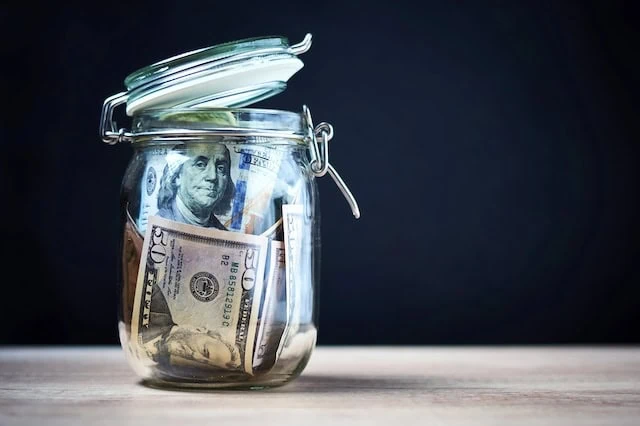
— Assets under management: $2.0 billion
— Expense ratio: 0.40%, or $4.00 per year on every $1,000 invested
— SEC yield: 7.8%*
— Morningstar Medalist rating: Bronze
Let’s say you want to buy shares of Apple. You go look up “AAPL” in your brokerage account and hit “buy.” Those shares you just bought are referred to as “common stock.” In general, 99.9% of the time, if someone is talking about stock, they’re talking about common stock.
But if you want, you can invest in another, far less noticed type of stock: Preferreds.
Preferred stocks are often referred to as “hybrids” because they share some elements of common stock, but some elements of bonds. For instance, preferred stocks trade on an exchange, represent ownership in a company, and typically pay qualified dividends (which enjoy long-term capital gains tax rates). However, preferred stocks typically don’t have voting rights, tend to trade around a par value, and distribute a fixed level of income—all qualities of bonds.
Related: 13 Best Long-Term Stocks to Buy and Hold Forever
They’re called “preferred” because their dividends have preference over common-stock dividends. For instance, if a company wants to cut its dividends, it must do so to common-stock dividends before it touches preferreds. And many preferreds are also “cumulative,” meaning that if a dividend payment is missed, it must be paid before the company can start paying common shareholders again.
This combination of traits results in an asset that doesn’t have the explosive upside of common stock, but is more defensive like a bond, and that also tends to offer much higher yields than what a company’s common stock will deliver.
The problem is, compared to commons, there’s very little information available about preferreds. They’re difficult for the average investor to analyze and compare. So similarly to bonds, it often makes more sense to own a collection of them via an ETF. As a result, preferred funds—like the VanEck Preferred Securities ex-Financials (PFXF)—tend to be some of the best-yielding high-dividend ETFs you can find.
PFXF is a collection of about 100 preferred stocks, about a third of which are investment-grade, and another third of which are not investment-grade. The remaining third is “not rated,” which simply means they’re not rated by the major ratings firms … but that doesn’t mean they’re necessarily poor-quality preferreds.
Related: 5 Best Vanguard Retirement Funds [Save More, for Less]
But VanEck’s ETF is an oddball. You see, most preferred funds hold an outsized amount of stocks from the financial sector—banks, insurers, and the like. However, PFXF explicitly excludes those stocks. Why? Well, it’s a product of its time. VanEck launched PFXF in 2012, in the wake of the Great Recession and Global Financial Crisis, in which banks’ common stocks plunged to the earth’s core—as did many of their preferreds. PFXF instead holds preferred shares from electric utilities, real estate investment trusts, telecoms, and more. Top holdings come from across the sector spectrum, and include preferreds from Boeing (BA), Albemarle (ALB), and NextEra Energy (NEE).
Why PFXF? Morningstar gives it a Bronze Medalist rating in large part because of the strategy’s “effective investment philosophy.” That philosophy has yielded real results, including long-term outperformance versus the category average, and a yield that’s typically higher than many of its financial-stock-addled contemporaries. So if you’re looking for high yield but more conservative price action, PFXF is among the best dividend ETFs you can own.
* SEC yield reflects the interest earned across the most recent 30-day period. This is a standard measure for funds holding bonds and preferred stocks.
Related: 9 Best Fidelity Index Funds to Buy
Best High-Dividend ETF #7: JPMorgan Equity Premium Income ETF
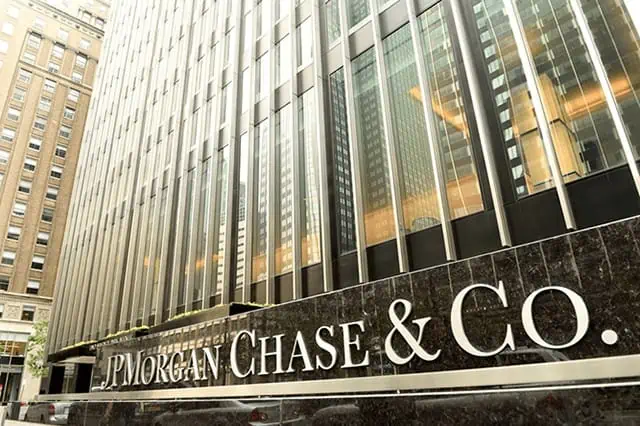
— Assets under management: $38.7 billion
— Expense ratio: 0.35%, or $3.50 per year on every $1,000 invested
— Dividend yield: 7.3%
— Morningstar Medalist rating: Bronze
While most high-dividend ETFs deliver high yields by simply owning high-yield dividend stocks, a few funds go about it from a different angle—using options and other market mechanics to generate yield instead.
Take the JPMorgan Equity Premium Income ETF (JEPI), for instance.
At a glance, JEPI’s 130-plus portfolio holdings wouldn’t make you blink an eye. It’s an 85/15 split of large- and mid-cap stocks—roughly the same split you’ll find in an S&P 500 index tracker. Positions such as Amazon (AMZN), Meta Platforms (META), and Nvidia (NVDA) would be found in any ol’ large-cap fund. And that fund would likely yield somewhere in the 1%-2% range.
Related: 13 Dividend Kings for Royally Resilient Income
But JEPI yields a sweet ~7%.
That’s because JEPI doesn’t merely hold these stocks. It also engages in selling covered calls—a type of options trading that’s designed to generate income using stocks you already own. The downside to this strategy: You can limit your upside in your underlying holdings. The upside? You can reduce volatility and reap healthy dividend payments.
It’s rare that an options-trading strategy earns a Morningstar Medalist rating. Morningstar’s reason behind its Bronze award for JEPI: “JPMorgan Equity Premium Income takes a nuanced approach to covered calls that delivers high income while reducing downside risk. This fund’s incremental improvements on a basic covered-call strategy makes it a solid option in the derivative income Morningstar Category,” though analyst Lan Anh Tran notes that “income from covered calls generally isn’t tax efficient.”
Related: The 7 Best Dividend ETFs [Get Income + Diversify]
Do you want to get serious about saving and planning for retirement? Sign up for Retire With Riley, Young and the Invested’s free retirement planning newsletter.
A Note About Dividend Yields

A term you’re going to want to familiarize yourself with is dividend yield.
A dividend yield tells you how much of your investment you can expect to get back in the form of dividends. A stock’s dividend yield, for instance, is calculated on an annualized basis, and expressed as a percentage of share price. Example: If a stock trades for $50 and pays 25 cents per quarter, that’s $1.00 in annual payouts—or 2.0% of the share price. So its dividend yield is 2.0%.
But a fund’s dividend yield is calculated a little differently. It’s much more difficult to estimate future payouts for an ETF or mutual fund because they own groups of many different stocks paying on changing cycles.
The fairest way to measure yield in dividend ETFs and mutual funds is to calculate the distributions over the last calendar year. Dividends might change for these funds going forward, but a trailing 12-month look is the most faithful way to calculate yield.
What is Yield-on-Cost?

When you look up an ETF’s information, the dividend yield listed is based on the past year’s worth of dividend payments and the current ETF share price.
That yield is often very different than the one current ETF shareholders enjoy. That yield is called “yield on cost,” which is the payout based on what you said, at the moment you invested.”
Let’s say you buy an ETF at $100, and it pays $1 per share annually. It yields 1.0% when you buy it ($1 / $100 x 100 = 1.0%).
In a year, that ETF has doubled to $200 per share, but the dividends it pays also doubled, to $2 per share. If you look up its information, its dividend is still 1.0% ($2 / $200 x 100 = 1.0%).
That’s not your yield on cost, however. You’re still receiving that higher dividend of $2 per share. But your cost basis is still the original $100 you bought the ETF share at. So now, your yield on cost has doubled, to 2.0% ($2 / $100 * 100 = 2.0%)!
How Do Dividend ETFs Pay Investors?

When you own an ETF, you own parts of shares of various dividend stocks with different payout schedules. However, you don’t get paid when those stocks pay out—you get paid based on the ETF’s payout schedule.
Dividend ETFs pay their investors the same way as dividend stocks do, with deposits appearing on your brokerage statement on a regular cycle. Some funds—like the Global X SuperDividend ETF (SDIV)—pay you on a monthly cycle. But the majority, including the other six dividend ETFs on this list, all pay on a quarterly schedule, which is similar to most U.S. dividend stocks.
Why Does a Fund’s Expense Ratio Matter So Much?

Every dollar you pay in expenses is a dollar that comes directly out of your returns. So, it is absolutely in your best interests to keep your expense ratios to an absolute minimum.
The expense ratio is the percentage of your investment lost each year to management fees, trading expenses and other fund expenses. Because index funds are passively managed and don’t have large staffs of portfolio managers and analysts to pay, they tend to have some of the lowest expense ratios of all mutual funds.
This matters because every dollar not lost to expenses is a dollar that is available to grow and compound. And over an investing lifetime, even a half a percent can have a huge impact. If you invest just $1,000 in a fund generating 5% per year after fees, over a 30-year horizon, it will grow to $4,116. However, if you invested $1,000 in the same fund, but it had an additional 50 basis points in fees (so it only generated 4.5% per year in returns), it would grow to only $3,584 over the same period.
Do you want to get serious about saving and planning for retirement? Sign up for Retire With Riley, Young and the Invested’s free retirement planning newsletter.
Featured Financial Products
Related: 6 Best Stock Recommendation Services [Stock Picking + Tips]

Stock recommendation services are popular shortcuts that help millions of investors make educated decisions without having to spend hours of time doing research. But just like, say, a driving shortcut, the quality of stock recommendations can vary widely—and who you’re willing to listen to largely boils down to track record and trust.
The natural question, then, is “Which services are worth a shot?” We explore some of the best (and best-known) stock recommendation services.
Related: 13 Best Long-Term Stocks to Buy and Hold Forever
As even novice investors probably know, funds—whether they’re mutual funds or exchange-traded funds (ETFs)—are the simplest and easiest ways to invest in the stock market. But the best long-term stocks also offer many investors a way to stay “invested” intellectually—by following companies they believe in. They also provide investors with the potential for outperformance.
So if you’re looking for a starting point for your own portfolio, look no further. Check out our list of the best long-term stocks for buy-and-hold investors.
Related: 10 Best Monthly Dividend Stocks for Frequent, Regular Income
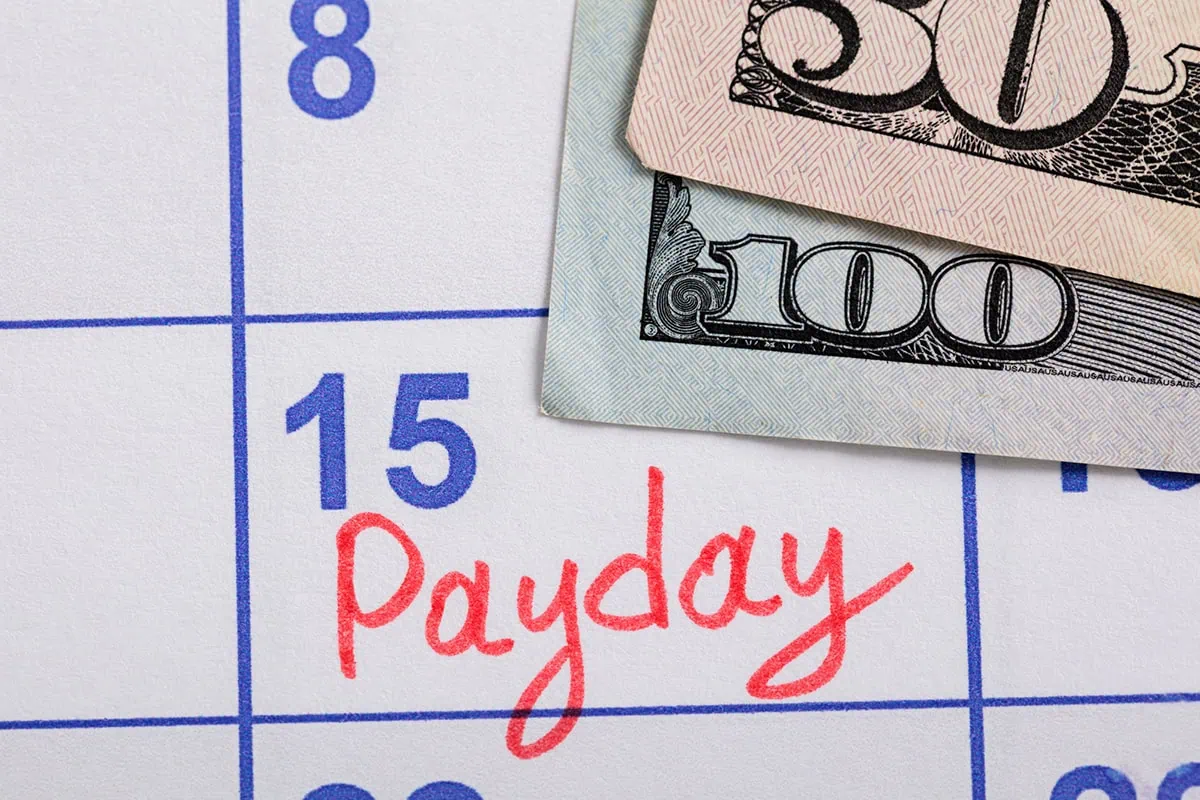
The vast majority of American dividend stocks pay regular, reliable payouts—and they do so at a more frequent clip (quarterly) than dividend stocks in most other countries (typically every six months or year).
Still, if you’ve ever thought to yourself, “it’d sure be nice to collect these dividends more often,” you don’t have to look far. While they’re not terribly common, American exchanges boast dozens of monthly dividend stocks.
Please Don’t Forget to Like, Follow and Comment
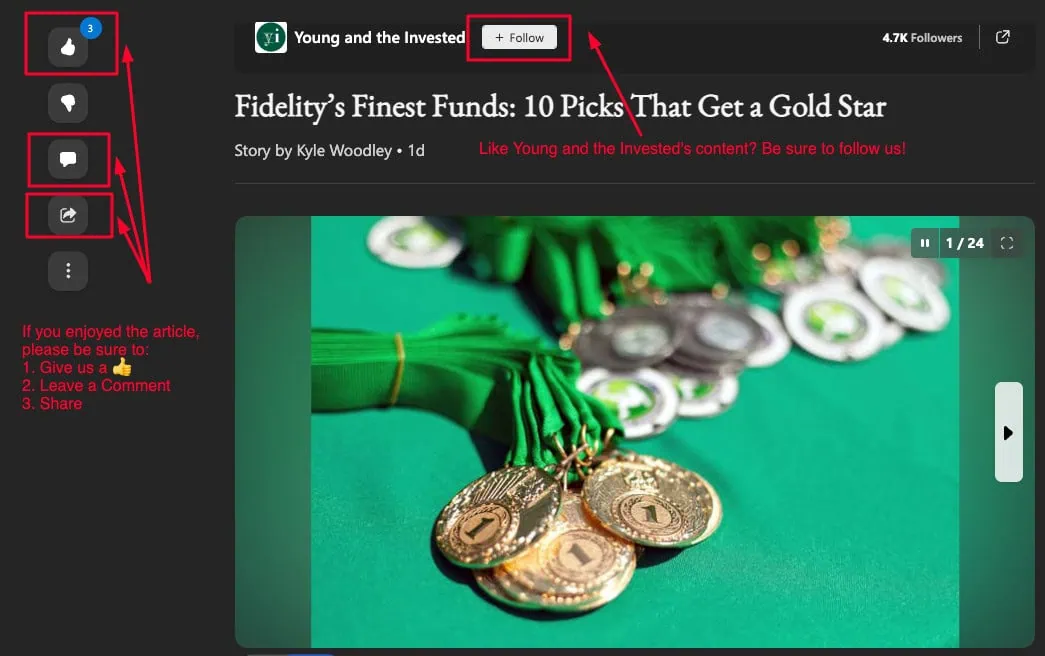
Did you find this article helpful? We’d love to hear your thoughts! Leave a comment with the box on the left-hand side of the screen and share your thoughts.
Also, do you want to stay up-to-date on our latest content?
1. Follow us by clicking the [+ Follow] button above,
2. Subscribe to Retire With Riley, our free weekly retirement planning newsletter, and
3. Give the article a Thumbs Up on the top-left side of the screen.
4. And lastly, if you think this information would benefit your friends and family, don’t hesitate to share it with them!





